As of January 1, 2020, a new law mandates that associations with buildings containing three or more units must conduct inspections on load-bearing structures, including balconies and other external elements. These inspections are crucial to ensure compliance with updated codes and identify any potential structural issues. We have provided an overview of the requirements set forth by the law and highlighted the importance of timely inspections.
Additionally, we will address the responsibilities of HOAs in maintaining, repairing, and replacing load-bearing configurations. Read on to learn more about the new balcony inspection law and how it may affect your homeowner’s association.
Understanding the Requirements of the Balcony Inspection Law:
The new law necessitates inspections of elevated structures, such as balconies, at least once every nine years, with the first inspection deadline set for January 1, 2025. These inspections must be conducted by licensed structural engineers or architects using the least intrusive methods possible. Inspectors must ensure a 95 percent confidence level that the sample results represent the entire structure, with a margin of error not exceeding 5 percent. The primary objective is to identify any structural issues or repairs that may be required, and a comprehensive report must be submitted to both the board and the local code enforcement agency within 15 days of completion.
Additional Inspection and Repair Obligations for HOAs:
It's important to note that the new law does not alter the responsibility of maintaining, repairing, or replacing load-bearing configurations. Instead, it imposes additional inspection and repair obligations on homeowners associations. This means that HOAs must remain proactive in identifying potential structural concerns and taking appropriate measures to rectify them. By conducting regular inspections and addressing issues promptly, HOAs can fulfill their obligations and ensure the safety of their residents.
Addressing Repairs for Structural Damage:
One common issue that may arise during inspections is damage caused by various types of dry rot, including termites and fungi. These culprits feed on wood and can spread throughout a structure, compromising its integrity. To mitigate the risk of collapse, it is imperative to promptly remove all decayed wood and fungi. Failure to address these issues in a timely manner can lead to increased liabilities and potential safety hazards. Therefore, it is crucial for HOAs to address repairs promptly and follow the recommendations provided in the inspection report.
Dealing with Immediate Safety Threats:
If an inspector identifies an immediate threat to the safety of occupants, the homeowners association must take immediate action to rectify the issue upon receiving the inspection report. Safety should always be the top priority, and any risks should be addressed promptly to protect residents from potential harm.
As the new balcony inspection law comes into effect, it is crucial for homeowners associations to be prepared and proactive. By adhering to the inspection requirements, promptly addressing repairs, and maintaining a safe living environment for residents, HOAs can fulfill their obligations and ensure compliance with the law.
If you require further information or assistance regarding updates on codes, feel free to contact Dominic Cirillo at Atlantic & Pacific Management at (858) 672-3100 or visit aphoamgmt.com. Stay proactive, prioritize safety, and ensure compliance with the new balcony inspection law to protect your community and its residents.
